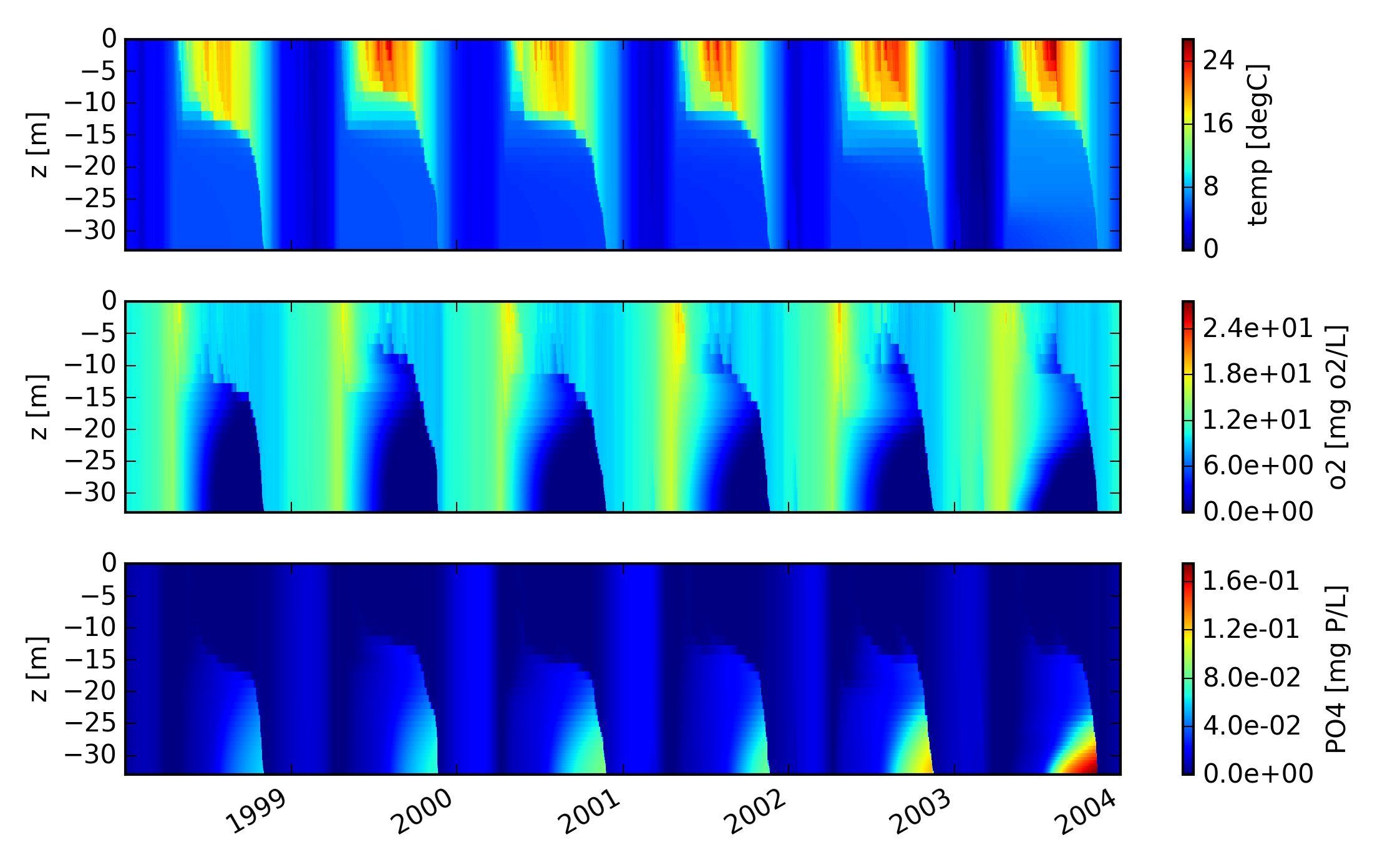Ravn
Lake Ravn is a 33 meter deep Danish lake, which stratifies for approx. five months each year. The lake is part of a National Monitoring Program, and the ecological quality of the lake has been followed by collection of bi-weekly or monthly data since 1989.

Lake Ravn, Denmark, D. Trolle (2005)
During stratification, hypolimnetic oxygen is depleted, and consequently phosphate is released from the reduced bottom sediments (see figure below). This nutrient release can, when later mixed into the upper waters, fuel phytoplankton production. While the ecological quality of the lake has increased to some extent following the late 90s, the lake may still be subject to harmful algal blooms during summer months. As for many other lakes across Europe, ecological quality in Lake Ravn must comply with the EU Water Framework Directive, and both empirical and mechanistic models have been used as decision support tools [e.g., Trolle et al. 2008], particularly for deriving maximum allowable nutrient load thresholds.

Simulation results
In an attempt to better understand the effects of changes in external nutrient loads on the ecosystem of Lake Ravn, a coupled GOTM-FABM-PCLake model has recently been applied to the lake in a project funded by the Danish Ministry of the Environment. When comparing simulated and observed data, this model generally performs better relative to previous modelling attempts, and has improved the basis for making management decisions.
The movie is based on Google Earth merged with drone based recordings (camera), recorded 3. September 2018. Drone operator: Peter B. Sørensen and movie compilation Anders Nielsen.